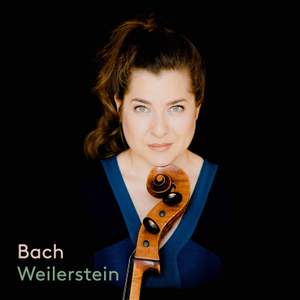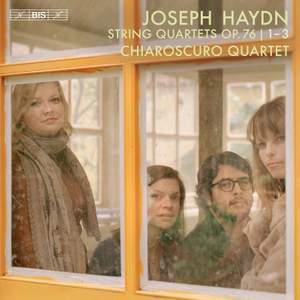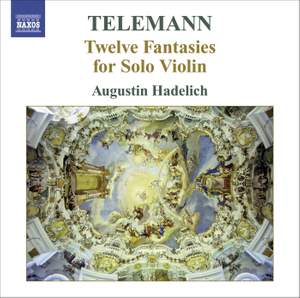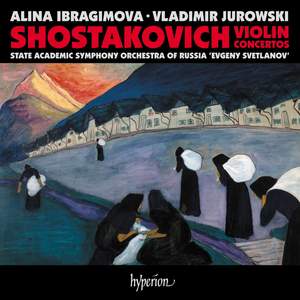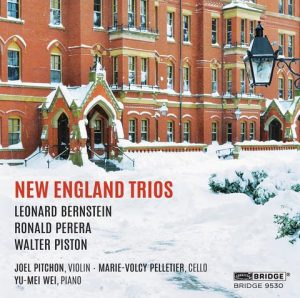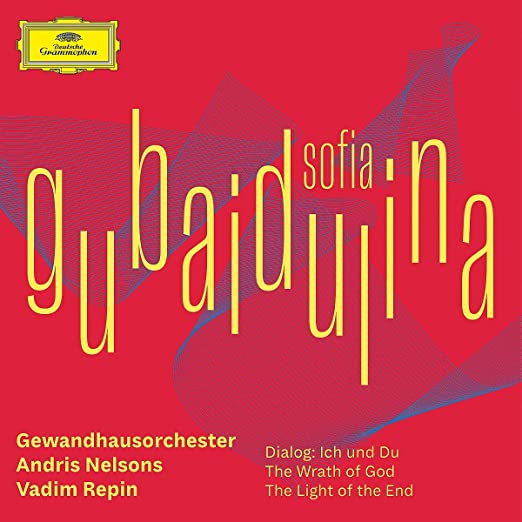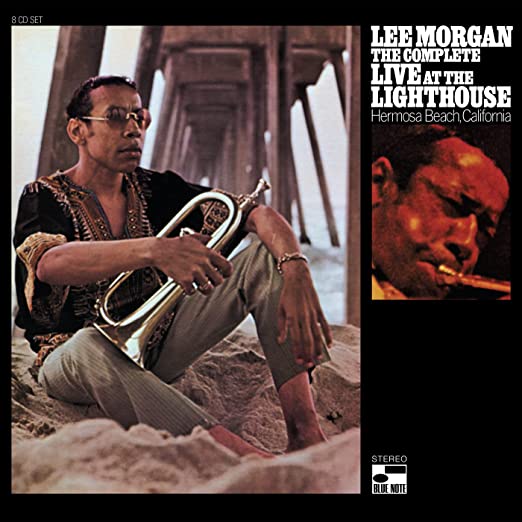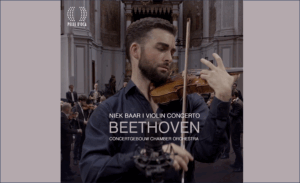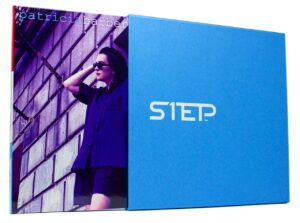…all descriptions of music are quite worthless & rather unpleasant; they are apt to be hysterical & to say things the people will be ashamed of having said afterwards. V. Woolf, Diary.
Bach Cello Suites, Alisa Weilerstein, Pentatone PTC 5186 751.
I am a big first impression guy. I never leave it at that, but I take my first hearing very seriously. And my first impression of Alisa Weilerstein's Bach is its beauty. If this is the French style, so be it. But knowing both Fournier and Gastinel well, I hear something beyond their kind of beauty here.
Weilerstein's own word for what characterizes her interpretation is "joy." Not, as it turns out, ebullience, excitement, enthusiasm. but joy as in grace and confidence. Make a joyful noise unto the Lord…or Saint Cecelia. She writes in the album notes of her expectation that she would wait until she got older to record this music (she is 37), but decided that something would be lost to her if she did that, a sense of freedom. She says the Bach Suites invite a degree of freedom that she fears she might not be capable of as she grew older and too set in her ways—and too respectful of both the music and other cellists. Fear of the definitive. Perhaps, fear of losing the beauty as she understood it.
This is what shows in her playing. The joy that comes with affection and freedom rather than an excess of respect. Her touch is moderately light—she does not dig into notes as some others do. There is not much drama, no artful pauses for effect, changes of pace. There is no earnest striving. We are mostly conscious of melodic momentum, of a constant moving forward, moving on. This does not result in frivolity or a lack of seriousness. Rather, we feel a lack of self-consciousness, of conspicuous rhetoric. If this sounds like maturity, that's how I hear it: a Bach who takes the long view of things, rather than the mercurial urgency of the present.
Isn't this what we come to Bach for? Aren't the rare performances of this music that achieve this quality the ones that ring most true?I collect sets of Bach's Suites because I have come to realize that, as Weilerstein writes, "The Suites are too rich with ideas, too full of subtleties, and too dense with the burden of history for any particular interpretation to be exhaustive, any particularly choice definitive."
Regretfully, there is no information about her in the program notes. All if I know is that she teaches at the New England Conservatory and is the daughter of the Cleveland Quartet's founding first violinist, Donald Weilerstein. What I can tell you is that her Bach has become my all-time favorite.
Joseph Haydn, String Quartets, Opus 76, nos. 1-3. Chiaroscuro Quartet. BIS 2348 SACD hybrid.
Those of you who know of eloquent and versatile Russian born violinist Alina Ibragimova from her memorable recordings of Bach, Beethoven, and Mozart primarily, also likely know of the quartet she founded in 2005, the Chiaroscuro Quartet made up of herself and three very fine young fellow musicians (a Swedish violist, a Spanish violinist, and a French cellist) playing Haydn, Mozart, Beethoven, and even some Schubert and Mendelssohn on 'authentic' eighteenth century instruments. This recording of the first three quartets of Haydn's Opus 76 marks the group's fifth outing, the first three for Hyperion, the most recent two for BIS.
The current recording is every bit as compelling as the earlier ones. Early music ensembles playing Mozart and Haydn have come a long way since the the Salomons, who, despite the virtues of first violinist Simon Standage, reamed out our ears a generation ago with their assertive astringency. Ibragimova and her colleagues possess all of the virtues of early music groups—clarity, pace, elegance, nuance—and, unless your music system has peaky upper-upper-mid and treble, none of their shortcomings.
If you don't know these recordings, you are in for a musical adventure.
Telemann, Twelve Fantasies for Solo Violin. Augustin Hadelich. Naxos 8.570563.
Shostakovich, Violin Concertos, Alina Ibragimova, State Academic Orchestra of Russia, Vladimir Jurowski. Hyperion CDA 68313.
I am writing about these two albums together because for me, each is as much about the performing violinists as it is about the music and recordings. Comparing two fine musicians head to head on the same instrument is as fascinating as it is challenging, especially for the amateur listener.
Augustin Hadelich plays with great confidence that is rare. Heard head to head with Ibragimova, this is even more evident than usual. He is forceful, fresh, and exhilarating; he can make (almost) any composer he plays sound like a major one: most notably Adès, Ligeti, Brahms. I find him irresistible. Here he shows us why Telemann was considered Bach's equal in his time. Hadelich plays this music with great assurance of its quality. To be fair, it is still Telemann, and we find ourselves asking, can this music hold up to the playing? My sense in the end is that Hadelich makes the best case for this music I've ever heard. It ain't Bach, but who is?
Alina Ibragimova takes us with purity of tone, refinement, grace, and eloquence. Bach, Mozart, Beethoven and now, back home in Mother Russia where she was born, a wonderfully surprising Shostakovich. I have never heard this music sound so beautiful. Does she denature Shostakovich? Does Petrenko? Do the Sorel Quartet? Or do they find his soul. A great and lovely performance—and recording.
New England Trios. Walter Piston, Leonard Bernstein, Ronald Perera. Bridge 9530.
My sincerest sympathy goes out to record producers who are charged with coming up with a theme for their releases. Here are four notable and engaging twentieth century American piano trios well worth our attention. How shall we tie them together to justify the album? Well there is a huge Western Massachusetts connection: two musicians and a composer from Smith College and nearby Deerfield Academy. And Piston, the star of the show (with two of the four works) is associated with Harvard. Bernstein, hmmm, oh he went to Harvard and actually wrote his trio while an undergraduate there. How about "New England Trios?" But of course we all know this doesn't matter, unless your ears are far better attuned to regional matter than mine. What we have here is an excellent collection of American chamber music, including a delightful surprise from Smith emeritus professor, Ronald Perera whom we would likely never otherwise have heard.
You can't take the Leonard Bernstein out of Leonard Bernstein, and that's fine. He will flash bits of modernism about in skillful, attractive ways; but eventually his musical heart will out, even here at the start of his career. He has songs to sing, dances to dance and will eventually sing and dance them. And we will either be grateful or be be put off by them. In his Trio (1937) he hides them pretty well, with modernist Piston, presumably his teacher, listening over his shoulder; but they're there if you listen for them.
I would guess that the two Smith College members of the performing trio urged the trio of their former colleague, Ronald Perera, on the producer of the album, a worthwhile piece of lobbying. If there is an audible influence here, it is Copland's. Perera tells us in the album notes that his trio is about Ahab and Moby Dick, which is fine if that's what you come to music for. To my ears, it is an opening and closing bit of playfulness surrounding an engaging extended meditation of mid-twentieth century American Neo-romanticism.
The first of the Piston trios (1935), is full of Stravinsky but if you're a modern American composer and not a major one with a flavor of your own, Stravinsky is a good and probably unavoidable choice. I could happily listen to Piston all day: this is what modernism is supposed to sound like, a reformulation of the baroque, music that refreshes how we think of the baroque. It is what Eliot is talking about when he talks about how 'the tradition' is supposed work. Piston's Piano Trio No. 2 (1966) has never heard of Stravinsky! It strikes off on its own to become a more interesting if less engaging piece of music.
This will be an easy album to overlook. Don't.
Systems used for this audition: Resolution Audio Cantata 3.0 CD player w/BlackJack power cord; Gilbert Yeung Design solid state NSI "G" integrated amplifier with Jean Marie Reynaud Voce Grande loudspeakers; and Audio Note Tonmeister Meishu Silver Signature integrated 300B tube amplifier with Audio Note K/SPx SE loudspeakers; Crimson interconnects and speaker cable; Mapleshade Samson equipment rack.
Bob Neill, a former equipment reviewer for Enjoy the Music and Positive Feedback, is proprietor of Amherst Audio in Western Massachusetts which sells equipment from Audio Note (UK), Gilbert Yeung Design (formerly Blue Circle) (Canada), Jean Marie Reynaud (France), and Resolution Audio (US).




